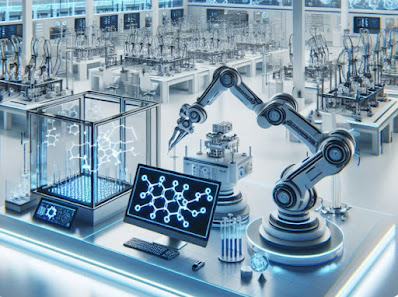Scientific research is advancing with the use of self-driving labs and artificial intelligence (AI) systems. These technologies are speeding up experimentation and unlocking potential for groundbreaking discoveries. Autonomous labs are reshaping the scientific landscape by predicting protein structures and revolutionizing the search for better materials and catalysts. However, there are debates and challenges to navigate. This article explores self-driving labs, their capabilities, controversies, and potential implications for scientific research.
One remarkable advancement is the ability to predict protein structures. AI algorithms have made progress in this area, allowing researchers to predict protein structures more efficiently. This breakthrough can revolutionize drug discovery by identifying therapeutic targets more precisely and quickly.
Self-driving labs can conduct experiments much faster than humans, accelerating scientific inquiry. They free up researchers to focus on complex aspects of their work and explore multiple research projects simultaneously.
However, caution is necessary as self-driving labs become more prevalent. Some scientists raise concerns about the accuracy and reliability of results generated by these autonomous entities. Controversies can arise in interpreting outcomes, as humans still guide the machines on where to focus and prioritize projects. Researchers must ensure that chosen materials are genuinely viable candidates for further investigation.
Despite the challenges, self-driving labs bring significant benefits to scientific research. These labs work tirelessly, measuring properties, evaluating results, and adjusting future experiments. This work ethic allows researchers to accumulate data rapidly, leading to faster insights and discoveries. AI systems integrated into the pursuit of better materials and catalysts hold promise for advancements in renewable energy and sustainable manufacturing.
Google DeepMind's AI algorithm predicted millions of new crystal structures, opening possibilities for the development of novel materials. The University of Science and Technology of China used a robotic chemist to discover oxygen-producing catalysts, showcasing the potential of autonomous labs in groundbreaking findings.
Boston University's BEAR is another notable development in self-driving labs. This robotic system can conduct up to 50 experiments a day without human supervision. By delegating mundane tasks to AI and robots, scientists can focus on higher-level analysis and interpretation.
While autonomous labs are being developed across scientific disciplines, no world-altering outcomes have been achieved yet. Human intellect and intuition are still crucial in interpreting data and establishing meaningful connections. The true potential lies in the symbiotic relationship between AI and human expertise.
The future of self-driving labs and AI in scientific research is both exciting and uncertain. These technologies have the potential to democratize access to scientific experimentation and enable global collaboration. However, challenges regarding accuracy, interpretation, and ethical implications need to be addressed.
In conclusion, self-driving labs and AI systems are revolutionizing scientific research. They offer opportunities for discovery and innovation, from predicting protein structures to accelerating the search for better materials and catalysts. While challenges persist, the potential benefits cannot be overlooked. Striking a balance between technological advancements and human guidance is vital to ensure ethical and impactful scientific knowledge. The future of scientific research is unfolding, and the possibilities are awe-inspiring.





0 Comments